I've code gradient descent algorithm in R and now I'm trying to "draw" the path of the vectors.
I've got draw points in my contour plot, but it's not correct because nobody knows what happened first.
In my algorith always I have an previous state P=(Xi,Yi) and a later state L=(Xi+1,Yi+1), so, How can I draw the vector PL in a contour or a persp plot?
I only got this with contour, where the red point is the convergence:
The same for persp:
Thanks all!
EDIT:
Graphics can be obtanined respectively:
f<-function(u,v){
u*u*exp(2*v)+4*v*v*exp(-2*u)-4*u*v*exp(v-u)
}
x = seq(-2, 2, by = 0.5)
y = seq(-2, 2, by = 0.5)
z <- outer(x,y,f)
#Contour plot
contour(x,y,z)
#Persp plot
persp(x, y, z, phi = 25, theta = 55, xlim=c(-2,2), ylim=c(-2,2),
xlab = "U", ylab = "V",
main = "F(u,v)", col="yellow", ticktype = "detailed"
) -> res



